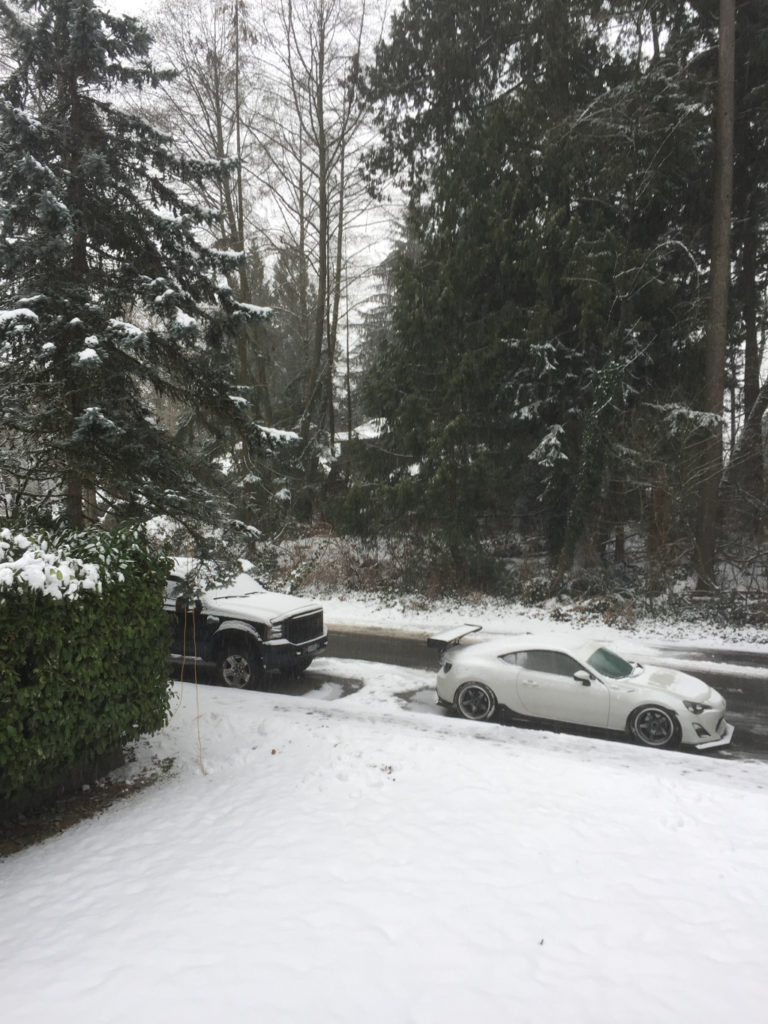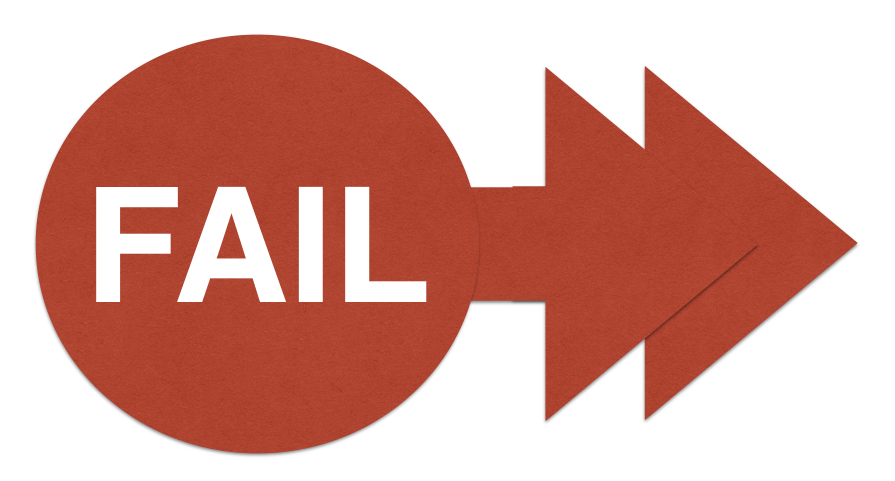Archives For persistence
My son Caleb has been training for the 2018 DownHill Mountain Bike racing season and since it is his first year to compete as an Elite or Pro racer in the BC Cup and NorthWest cup he has been putting in some extra effort. He is also planning on competing in some Freeride competitions (Downhill plus stunts) so he is also working hard to add some new stunts to his repertoire of skills. I am always looking for ways to support Caleb’s training so I was planning on taking him and a few of his training partners out to do some training runs on one on one of the mountains on the North Shore the other day but the weather did not cooperate. We woke up to about 6 inches of snow and since we live at the base of the mountain you can imagine how much more snow there is as you go up in elevation.

An advantage of living in one of the most Mountain bike rider friendly locations in North America is that in addition to some of the best outdoor riding locations we also have indoor training facilities. Caleb and I spent the afternoon at the AiReCenter in a neighboring community. The following pictures reveal the scale training facility and the intensity of Caleb’s training:

In addition to major wooden features, the facility has 3 full lines of dirt jumps including a Pro Line with wooden kickers (launch ramps).
The following starting point/ramp should give you context for how big and intense the facility is:
The Pro Line dirt jumps are a great place to practice tailwhips, flips and many other stunts that Caleb will be using in FreeRide competitions:
Fortunately, one can practice backflips on the airbag or on a smaller ramp setup before doing the stunts on the dirt:
So what does Caleb’s training for his upcoming season have to do with learning? Or perhaps a better question is what can we learn about learning from Caleb’s training experience. The 20 hours a week of indoor training at the AiReCenter can be directly applied to Freeride but many of the bike control skills can also have a positive impact on racing. For example, a DH Racer spends a significant amount of time making split-second adjustments while in the air or as they skim the surface as they are propelled over the trail. The continual adjustments that Caleb makes as he repeatedly hits the dirt jump lines or performs black flips, tailwhips, and other stunts are very similar to the adjustments that he has to make in real time on a race or Freeride course. The better the bike control a rider has the more confident they are and the better equipped they are to deal with the challenges each unique course has to offer. The fastest racers also the best riders so the more diverse a rider’s skills the better they can perform in a race or Freeride course.
One of the most important lessons that Caleb has learned this past year in training and that we can also learn from is transfer. Being able to move from theory to practice or more specifically being able to apply knowledge or a skill from one instance to another is a crucial aspect of transfer. The skills and confidence that Caleb builds at the AiReCenter are transferable to his regular training runs and ulimate to his racing. In the next few weeks, Caleb is planning to move off his dirt jump bike and onto his DH race bike at the AiReCenter to practice his backflips and tailwhips so that when he is riding on the actual trails he can perform these stunts with greater confidence and ultimately limit the risk of injury. Downhill Racing and Freeride are rightly called extreme sports because the riders are always on the verge of serious injury. Reducing the risk of injury is so important to the long-term success of the rider and to the peace of mind of the rider’s parents.
On our way home from the AiReCenter Caleb informed me that he is ready for this upcoming season and is feeling very confident in his ability. The additional 20 hours a week of indoor training he has added to all this other training is paying off and in another three months when the season starts Caleb is confident that he will be best prepared he has ever been. He is also recognizing how important it is to build his skills slowly through consistent deliberate practice. He is breaking down each aspect of his stunts and is working on each component to make sure that he has addressed all the necessary factors. The continual and repetitive aspect of performing on the edge of one’s ability and then making slight but cumulative adjustments is the essence of deliberate practice. Making those small and cumulative adjustments are what separates the experts from the amateurs and in the case of extreme sports, it is what will keep an athlete out of the hospital–which is also a good thing for the athlete and his family.
Failing forward is the ability to get back up after you’ve been knocked down, learn from your mistake, and move forward in a better direction.
— John C. Maxwell
I overheard a short part of a conversation my two boys had the other day that confirmed the importance of authentic projects, failing forward and having the willingness to explore multiple iterations in the pursuit of a specific goal. Let me give you the backstory…
My two boys are young professional athletes in the emerging sports of Down Hill, Freeride, and Enduro mountain racing. They are also entrepreneurs who are exploring ways of getting paid to continue pursuing their passion of extreme riding, extreme sports, and the extreme performance lifestyle. They share a garage which is not only their biking workshop, but also their workshop where they explore a wide assortment of other ideas that they are experimenting with to support and fund their biking, travels, and lifestyle. Levi recently purchased a dual sport motorcycle to save money on fuel cost while driving around town and to explore opportunities in adventure tourism. The bike needed a fair amount of work to get it to a reliable driving state so he needed the workshop during the repair stage. Caleb also uses the workshop to design and fabricate components for his import sports car which he has also been able to sell to other members of the sports car clubs and to the tuner subculture that revolves around modifying imported cars. Some of these ideas are taking off and Caleb has sold multiple copies of some of his creations and is now exploring manufacturing options. Levi has been accepted into the Enduro World Series (EWS) and has two Enduro races in South America this spring he has to train and prepare for and also fund. The list goes on and on. When you consider all that my boys are doing, life around our household is forever changing and there is no shortage of projects, activities, and experiments that happen in a limited shared space.
Due to the extreme housing costs in North Vancouver, we all share a 3 bedroom house and attached garage so my boys not only work and train together they live in close proximity and it is not uncommon to hear them talk about their projects. It is also not uncommon to hear them resolve the use of the workshop that they share. Caleb has been working on prototyping a new canard (a small bumper wing designed to provide downforce on the front end of the car) with hopes of creating a template for a carbon fiber version for which his tuning community is looking. Since the boy’s workshop isn’t that large they must coordinate its use and Levi was checking on the status of Caleb’s latest prototyping project to see when he could get some space back to work on his latest motorbike modification. This finally leads me to the recent conversation in which I overheard Levi asks Caleb:
…when are you going to be finished with the all the fiberglass work you are doing… I need to get my motorbike into the shop.
Caleb responded:
This current prototype isn’t working out so I am going to give up on it and try something different… you can use the shop once I clean up the space.
Levi responded:
Hey! Remember you never give up on anything you just shift your focus to a new direction. He laughed and added… a good general never retreats he just advances in a different direction.
There were some additional exchanges and laughter between the boys and when Levi came down for dinner I thanked him for reminding and encouraging his brother to always frame failing forward in a positive context. Both of my boys have been exposed to and use aspects of the Design Thinking process so the notion of ideation, prototyping, and testing is a very common part of their lives as they continue to explore ways to create new things and solve problems. While it easy to talk about the iterative process and state the importance of failing quickly so that you can find the right prototype that will finally work, it is much more difficult to live the process. I have watched both Levi and Caleb struggle persistently on projects for long periods and there is no denying that weeks or even months worth of failure in ideation, prototyping, and testing can become discouraging. Therefore, hearing one of my boys encouraging his brother to not view his experience as something that he was giving up on but rather a shift in focus assured me that my boys are going to be OK.
As I have stated in other posts, the continual practice of authentic learning and the lessons learned from all those years of authentic projects have prepared my boys to make their way in a very challenging but exciting world. You can’t teach persistence or grit but you can create the environment in which it will grow. You have to create a significant learning environment in which your learners are given the choice, ownership, and voice through those authentic learning opportunities where the continual iterative process of failing forward and repetition of ideation, prototyping, and testing will bring out that grit, persistence, and determination. It also doesn’t hurt to have someone else around who can remind and encourage you to not give up but to shift your focus to a new direction.




































